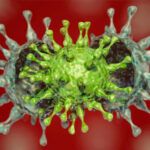“There are people who live without pain,” says Treede, a neurophysiologist at the University of Heidelberg. “They have been known to exist for centuries.
Insensitivity to pain, known as analgesia, is thought to be caused by a group of rare genetic diseases. However, being immune to pain does not mean being immune to injury. For example, sufferers can easily burn themselves on a hot cooker without realising it, and are prone to joint problems due to mechanical damage.
To avoid overloading our joints, or to avoid resting our hand on a hot cooker, we need nociception. This is our body’s alarm system, which warns us when the body is threatened with harm, and which the brain interprets as pain. The signals that activate the nociceptive system come into action before the threshold of bodily damage is reached, because it would be too late if the damage had already occurred once the pain had arrived. If the nociceptive system is impaired, a person may be unaware of a physical threat and suffer serious injury.
However, nociception and pain are not equivalent. Pain is a subjective sensation, Treede explains, while nociception describes the process of perceiving actual or potential harm, and can be measured objectively.
“I would say that to live without pain is to live without nociception,” says Treede. “It’s very, very dangerous because you lack this alarm system,” he adds. Unfortunately, people who lack it tend to have a shorter life expectancy. So while pain is not a pleasant sensation, it is your body’s way of protecting you from serious damage.
Dysfunctions of the nociceptive system can also occur in the other direction, causing unnecessary and chronic pain. “There is increasing evidence that, in a certain percentage of patients, pain persists beyond the normal healing of bodily damage, so it is not entirely linked to tissue damage,” explains Treede.
In fact, pain is currently the most common non-communicable disease in Europe. Chronic pain affects 19% of Europeans, impairing their quality of life and affecting their livelihoods. In the EU- and industry-funded IMI-PainCare project, Treede and colleagues sought to improve pain management and drug development, and to find new pain therapy methods.
Through several subprojects, the researchers profiled women with chronic pelvic pain, standardised the assessment of acute and chronic pain, and looked for biomarkers to identify the analgesic effects of drugs.
The project generated robust results, some of which were presented to policy makers during an event at the European Parliament, “The future of European pain research”(opens in a new window).
Despite the prevalence of pain, there is reluctance to fund pain research, says Treede. In part, this may be because it doesn’t make as much money. Depression and back pain are known to be the main causes of lost work hours. “Depression is now recognised as a real thing,” says Treede. “Chronic pain is being left behind.
More information: CORDIS







Leave a Reply